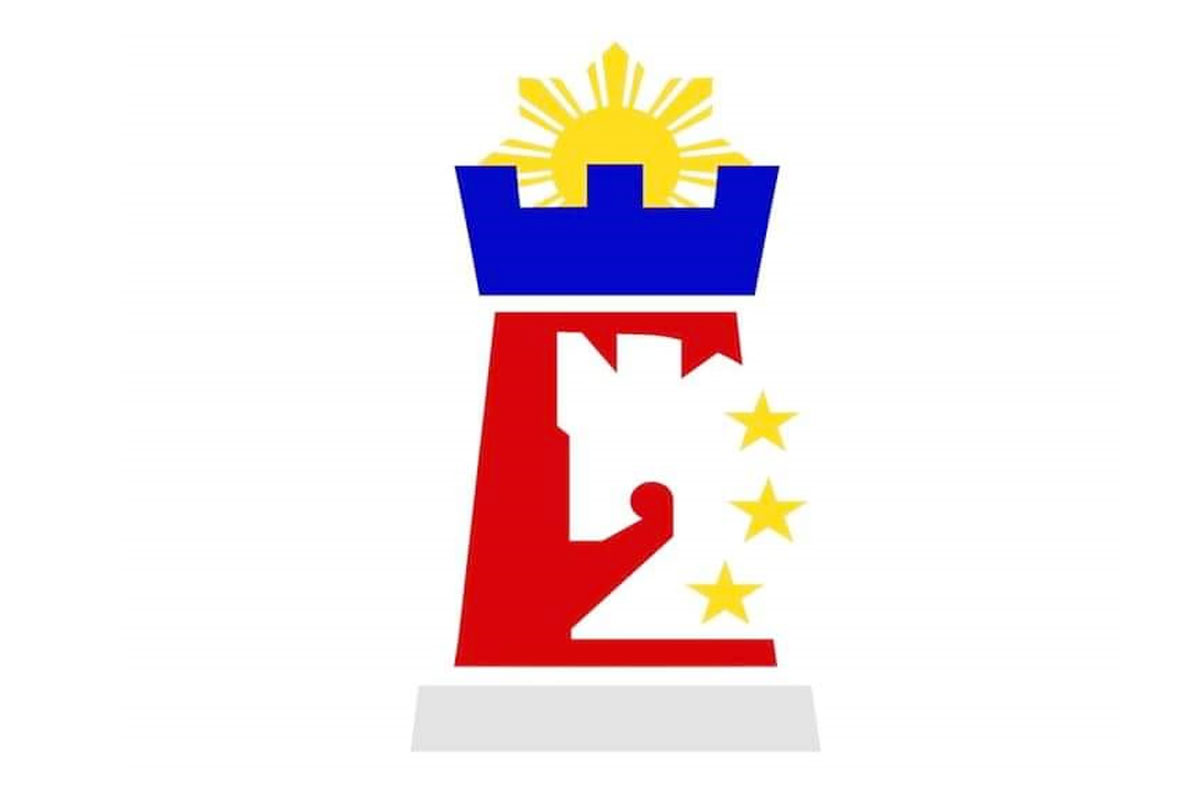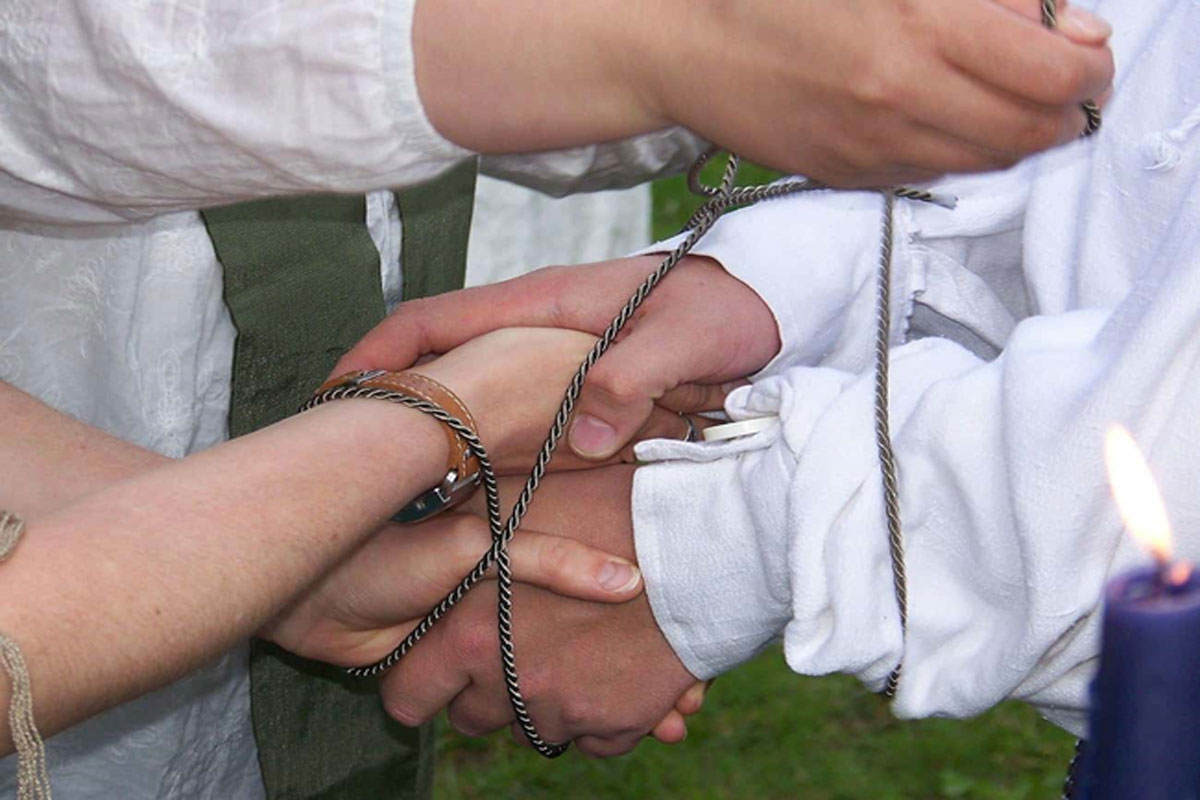
The History Behind 12 Wedding Traditions Still Practiced Today
Ivey Nucilli
The tradition of two people joining together in matrimony is a tale as old as time – you get married, you throw a party, and you live happily ever after (hopefully). But how did the customs of wedding cakes, bridesmaids, bouquet tosses, and white wedding dresses come to be? Some are closely related to wedding superstitions, while others have surprisingly deep historical roots.
Nevertheless, weddings are still as popular today as they were thousands of years ago, as are the wedding traditions that we still carry on.
________________________________________
• Photo: Kam Abbott / Flickr / CC-BY 2.0
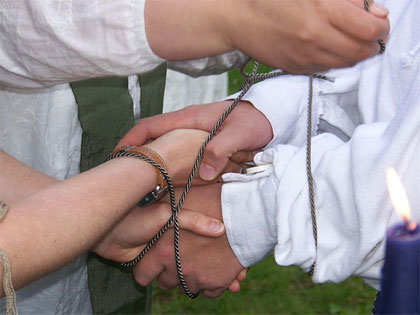 ‘Tying The Knot’ Comes From A Celtic Tradition Of Binding The Couple’s Hands
‘Tying The Knot’ Comes From A Celtic Tradition Of Binding The Couple’s Hands
The phrase “tying the knot” dates back to a medieval wedding tradition known as the handfasting ceremony. The handfasting ceremony is an ancient Celtic practice that involves binding couples together in matrimony by tying knots of cloth around their hands – making two become one. The binding would usually involve tying a knot for each vow, creating a keepsake for the couple.
This ritual is still in practice today, often taking place outdoors, with nature surrounding the new couple. Now, handfasting is usually an extra element of a wedding ceremony, keeping an old tradition alive.
• Engaging origin story?
• • Photo: Trouble2016 / Wikimedia Commons / CC-BY-SA 4.0
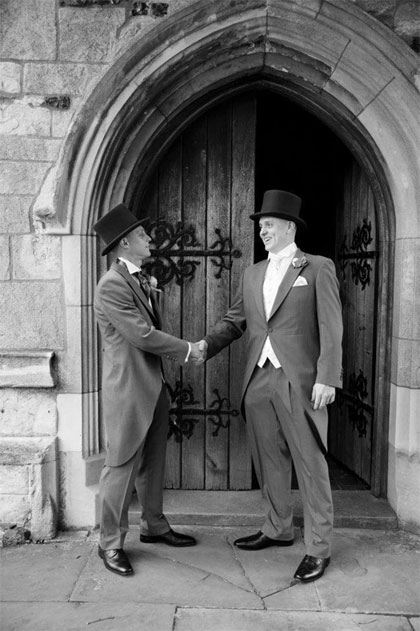 The Best Man Was Really The Best Sword Fighter
The Best Man Was Really The Best Sword Fighter
In centuries past, men resorted to capturing the bride-to-be from her family if they disapproved of the marriage. To stop anyone from recapturing the bride-to-be, the groom (and his party) were prepared to sword fight.
The best man would act as the groom’s backup, in case the bride’s loved ones tried to take her back from the groom or if she tried to run away. The best man was chosen based on his ability to sword fight, and he would serve as the groom’s armed guard throughout the ceremony.
• Engaging origin story?
• • Photo: FOTO:FORTEPAN / Hámori Gyula / Wikimedia Commons / CC-BY-SA 3.0
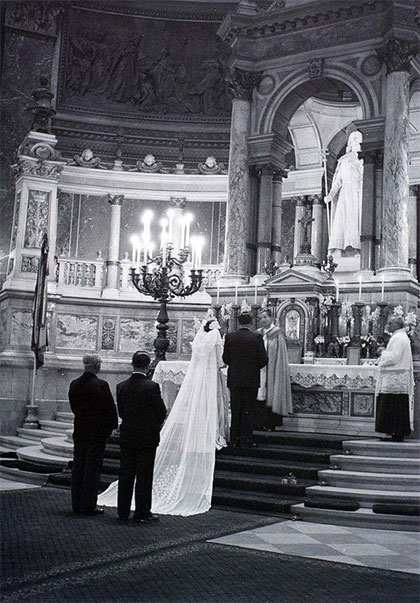 Brides Stood On The Left Side So The Groom Could Easily Draw His Sword
Brides Stood On The Left Side So The Groom Could Easily Draw His Sword
The historically known practice of “marriage by capture,” where a man captures a woman to make her his bride, has been practiced for thousands of years. Though it may seem like a long-gone custom of the past, the practice still exists among some cultures in Africa and Central Asia.
In the Western world, its legacy continues on in an unsuspecting way – where the bride and groom stand during a wedding ceremony. As is common in modern nuptials, the groom was to stand on the right and the bride on the left. This was so the groom could keep his right arm free to draw his sword, in case someone came to take the (captured) bride away.
• Engaging origin story?
• • Photo: Poul C. Poulsen, State Library of Queensland / Wikimedia Commons / Public domain
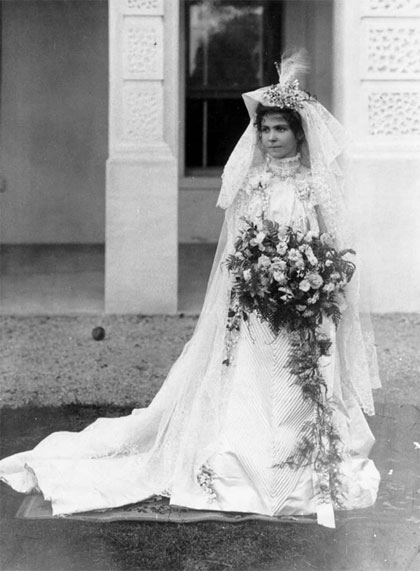 The Bouquet Was Tossed In Medieval Europe To Stop People From Ripping Apart The Bridal Gown
The Bouquet Was Tossed In Medieval Europe To Stop People From Ripping Apart The Bridal Gown
In medieval Europe, it was common practice for single women to chase down the bride and rip pieces off of her dress, leaving her in bits and pieces of what she was wed in. A bride did not expect to wear her wedding dress again, and the dress was seen as good luck for single women – a type of fertility charm. However, as years went on, the materials and labor to make a wedding dress became more expensive, making it more traditional for women to keep them.
To create a distraction and prevent guests from ripping the bride’s dress apart, objects were thrown, one of which became the bouquet. Symbolizing fertility, the bouquet was a cheaper option as the bride would not wish to keep it.
• Engaging origin story?
• • Photo: Anna Logvinova / Wikimedia Commons / CC-BY-SA 3.0
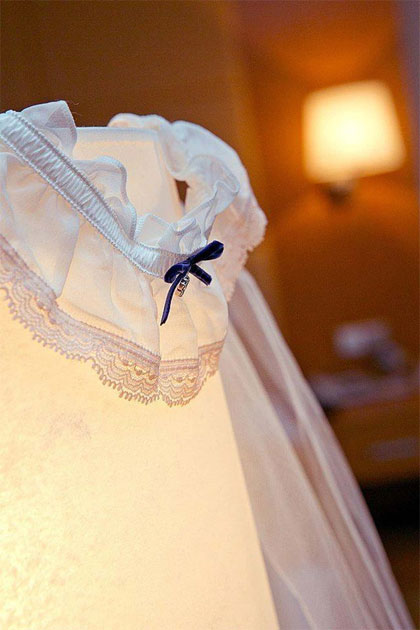 Something Old, New, Borrowed, And Blue Was Meant To Protect Against A Curse
Something Old, New, Borrowed, And Blue Was Meant To Protect Against A Curse
“Something old, something new, something borrowed, something blue, and a sixpence in your shoe,” is the traditional wedding rhyme that describes the objects a bride should have on her wedding day for good luck. This custom has been followed for centuries, starting as a Victorian-era rhyme that came out of the English county Lancashire.
Back then, “something blue” was usually a garter and used to protect against a curse passed through a malevolent glare that could make the bride infertile. “Something borrowed” was usually an undergarment from a woman who already had children, supposedly tricking the curse into thinking the bride was already fertile. Though often left out of the rhyme in modern day, a sixpence coin in your shoe symbolized prosperity for the new couple.
• Engaging origin story?
• • Photo: Nhật Tường / Wikimedia Commons / CC-BY-SA 4.0
 Queen Victoria Inspired The Tradition Of The White Wedding Dress
Queen Victoria Inspired The Tradition Of The White Wedding Dress
Before Queen Victoria’s 1841 wedding ceremony, it was common practice for brides to wear bright, colorful dresses that could be used again for other occasions. The 20-year-old bride chose to wear white to highlight the delicate lace of her gown, contrary to popular belief that it was to signify purity.
Though it was rare, prior to Victoria’s wedding, white was worn by women on their wedding days to show wealth – showing the bride’s family could afford to have the dress cleaned. Victoria asked “that no one else wear white to the wedding” aside from her bridesmaids, starting a trend still in practice today.
• Engaging origin story?
• • Photo: RF Vila / Wikimedia Commons / CC-BY-SA 4.0
 Ancient Egyptians Saw Circular Wedding Rings As A Symbol Of Eternity, And Wore Them On The Finger They Considered Closest To The Heart
Ancient Egyptians Saw Circular Wedding Rings As A Symbol Of Eternity, And Wore Them On The Finger They Considered Closest To The Heart
The tradition of wearing a wedding band dates way back to the ancient Egyptians. The ancient Egyptians believed a circle was the symbol of eternity, and to marry meant to spend eternity with one another. The rings they exchanged were made out of braided reeds and worn on the left-hand ring finger – which supposedly had a vein that ran directly to the heart. Though this “love vein,” later called vena amoris, isn’t actually a thing, the idea of the ring finger stuck around to modern day.
Rings continued to be a part of wedding ceremonies as the ancient Romans began to use rings in lieu of giving the bride money or a valuable object. Centuries later, diamonds first made their appearance on engagement rings, with the first recorded diamond engagement ring being given out in 1477 by Archduke Maximilian of Austria. This continued on as a popular trend, with more than 80% of American brides receiving diamond engagement rings yearly.
• Engaging origin story?
• • Photo: Maitland, H. Noel, State Library of Queensland / Wikimedia Commons / Public domain
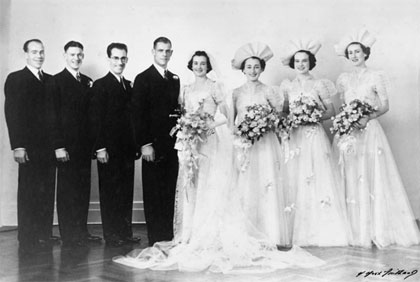 Bridesmaids Would Wear The Same Color As Each Other And The Bride, To Act As Decoy Brides
Bridesmaids Would Wear The Same Color As Each Other And The Bride, To Act As Decoy Brides
According to some historians, the tradition of all bridesmaids wearing the same color as one another dates back to ancient Rome and feudal China, originating as a method to keep the bride safe.
During these times, it was common for a bride to have to travel far to her groom’s town, making her an easy target for bandits or rival suitors. With an entourage of bridesmaids dressed just alike, it made it harder for the bride to fall victim to an assault.
The practice eventually evolved into a legal requirement for Romans, as they had to have 10 witnesses attend a wedding ceremony, all dressed in matching colors, for the wedding to be considered valid. The purpose of the similarly dressed witnesses was supposedly to confuse evil spirits that might wish the couple harm. Though some of the spiritual associations may have faded, the tradition of similarly dressed bridal parties was carried through the Victorian era, when Queen Victoria had her 12 bridesmaids wear matching white dresses to complement her satin gown.
• Engaging origin story?
• • Photo: Vandyck / Wikimedia Commons / Public domain
 The Wedding Veil Was Originally Used To Obscure The Bride’s Features
The Wedding Veil Was Originally Used To Obscure The Bride’s Features
The origins of the wedding veil vary depending on the source, but many experts agree the accessory can be traced back to ancient Rome. They believe the bride would wear a veil as she walked down the aisle to hide herself from evil spirits who wanted to snatch her happiness. Once the marriage ceremony was successfully completed, the veil was lifted since the bride had beaten said evil spirits.
According to wedding historian Susan Waggoner, in addition to warding off unwanted spirits, the veil “wrapped brides from head to toe to represent the delivery of a modest and untouched maiden.” Another reported use of the veil was to mask the bride’s face from the groom in arranged marriages, thus he wouldn’t see her face until the union was sealed.
• Engaging origin story?
• • Photo: Infrogmation / Wikimedia Commons / GNUF
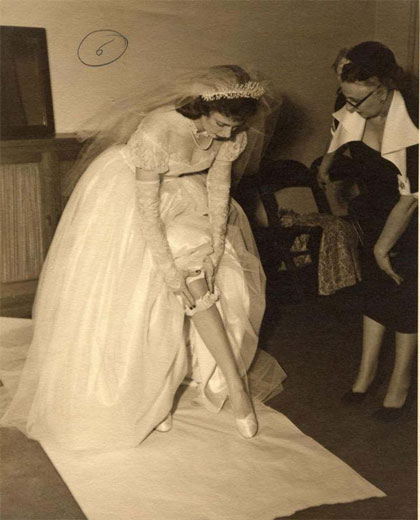 The Garter Toss Was Thrown As ‘Proof’ Of Consummation
The Garter Toss Was Thrown As ‘Proof’ Of Consummation
The long-standing tradition of the groom reaching under the bride’s dress to remove the garter and throw it to the male wedding guests dates back hundreds of years. However, the practice now is much different than what it used to be. According to Kim Forrest, Senior Editor at WeddingWire:
Back in olden times, newly-married couples were expected to consummate their union pretty much immediately after the wedding. And family members and friends would wait outside of their room to make sure that this happened. After the marriage was consummated, the groom would give the bride’s garter to the waiting crowd to prove that the deed was done.
• Engaging origin story?
• • Photo: Rembrandt / Wikimedia Commons / Public domain
 Bridesmaids Have Their Roots In A Biblical Wedding
Bridesmaids Have Their Roots In A Biblical Wedding
The tradition of bridesmaids may come from the biblical story of Jacob and his two wives. In the Book of Genesis, both wives – Leah and Rachel, are accompanied to their wedding by their handmaidens.
The handmaidens, or the brides’ maids, waited on the two women before the ceremony. In biblical times, bridesmaids were not always relatives or friends, but instead they were domestic workers who saw to the bride’s every need throughout her wedding day.
• Engaging origin story?
• • Photo: Paulhaberstroh / Wikimedia Commons / CC-BY-SA 4.0
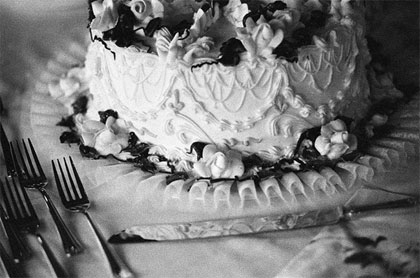 Wedding Cakes Originated In Ancient Rome, Where A Scone Was Crumbled Over The Couple’s Heads
Wedding Cakes Originated In Ancient Rome, Where A Scone Was Crumbled Over The Couple’s Heads
The tradition of having a special cake at a wedding dates all the way back to ancient Rome. The ancient Romans would end a wedding ceremony with a scone-like wheat or barley cake that would be crumbled over the bride’s head for good luck and fertility. The newlyweds would eat a few crumbs together as husband and wife, and this was considered one of their first unified acts as a married couple. The guests would then scoop up any remaining crumbs to eat themselves.
This custom continued on as the Romans conquered Britain in 43 CE. The Brits added a layer to the tradition as they started using stacked cookies, spiced buns, and scones to make a dessert tower the new couple would try and kiss over. The wedding ritual continued on with the first known official wedding confection coming from a 1685 recipe for Bride’s Pye: pastry crust filled with oysters, lamb testicles, throat, rooster comb, and pine kernels – and by the 17th century, wedding cakes replaced bridal pies.
ranker.com
Photo: Maitland, H. Noel, State Library of Queensland / Wikimedia Commons / Public domain











